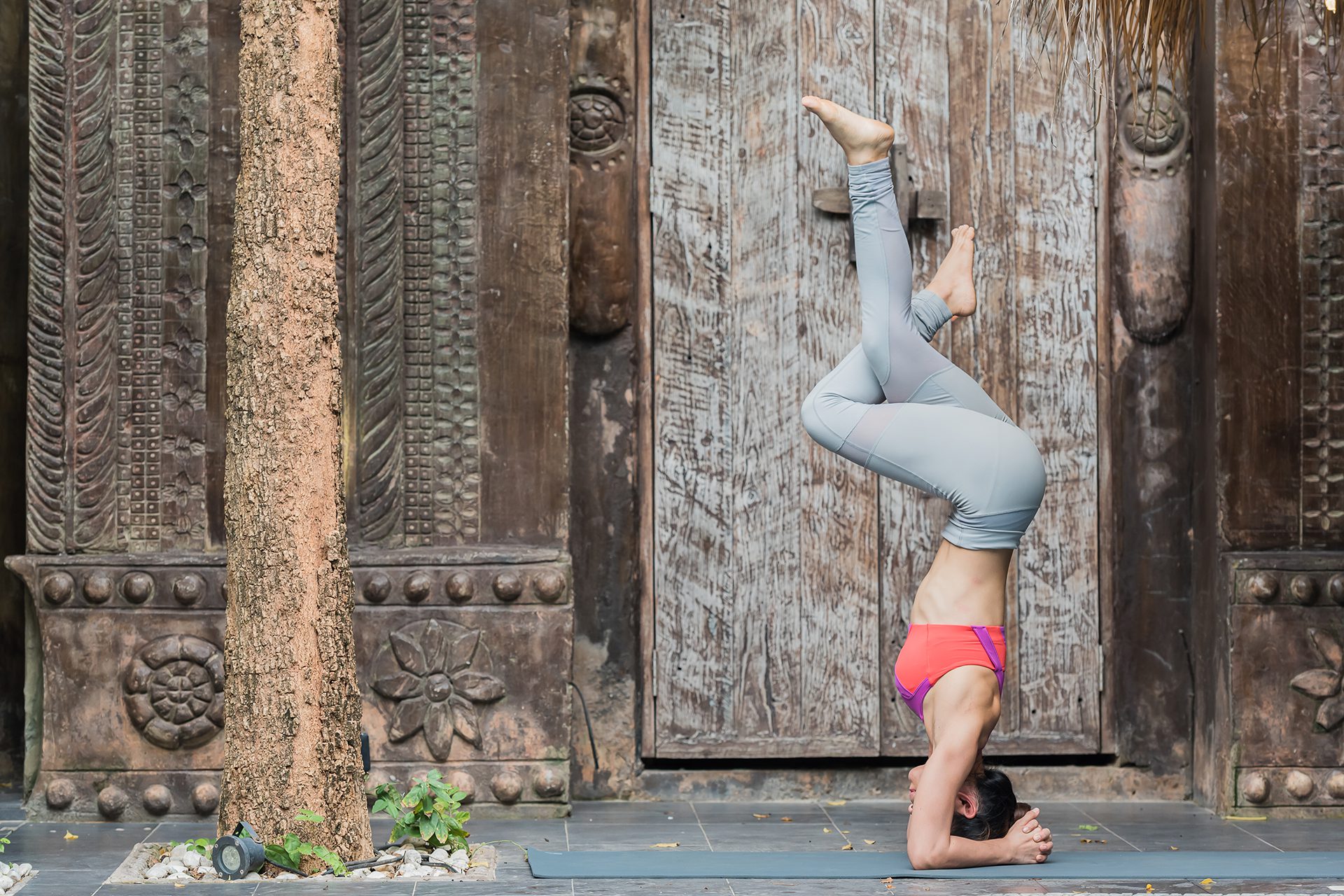GUIDING THE FLOW: EXPLORING ASHTANGA VINYASA YOGA TEACHER TRAINING
Ashtanga Vinyasa yoga is a dynamic and invigorating style of yoga practice. Created by Pattabhi Jois in 1948, Ashtanga Vinyasa yoga asanas are practiced in a flow, linked by the breath. This blog aims to guide you through a deeper understanding of the Ashtanga Vinyasa Yoga Teacher Training course, why it is popular and how it is different from the Ashtanga Yoga philosophy system.
WHY IS ASHTANGA VINYASA A POPULAR STYLE OF YOGA?
Over the years, the Ashtanga Vinyasa practice has gained popularity for its structured and dynamic approach. This style of yoga is progressive and systematic in nature. The practice is divided into a series of sequences, each building upon the previous one, starting with the Primary Series and advancing to more challenging sequences as practitioners develop strength, flexibility, and stamina. This structured progression provides a sense of accomplishment and keeps practitioners engaged and motivated as they strive to master each posture and sequence, offering a clear path for personal growth and development.
While originally there were six series of practice in the Ashtanga Vinyasa structure created by Pattabhi Jois, the Primary series itself must be practiced for years. It takes immense practice and dedication to build up the required strength, flexibility and stamina to progress to the intermediate and advanced series. Ashtanga Vinyasa yoga teacher training programs sometimes teach a shorter version to make the asanas more accessible to all practitioners.
Regular practice offers practitioners a holistic experience that encompasses physical, mental, and spiritual well-being. One of the key factors contributing to the popularity of this style of yoga is its emphasis on synchronizing breath with movement, which creates a flowing experience. Moving in a rhythmic flow, practitioners are taught to apply Ujjayi Pranayama (Victorious Breath) as this breathing technique keeps the body calm, while increasing body heat. This harmonious movement with the breath not only enhances the physical benefits of the practice but also fosters a deep connection between mind and body, promoting mindfulness and inner awareness.

WHAT DOES AN ASHTANGA VINYASA YOGA TEACHER TRAINING INCLUDE?
An Ashtanga Vinyasa Yoga Teacher Training course normally covers a depth of theory and practical sessions in most schools. Let’s look at what this includes.
- Theory: The 200-hour yoga teacher training course starts by delving deep into theory aspects such as the origins and history of yoga. Syllabus may cover different philosophies. For example, at Sampoorna Yoga, students are taught about the Ashtanga Yoga philosophy, that is, the Yoga Sutras and Eight Limbs of Yoga. Some schools may choose to cover the Hatha Yoga philosophy or the Bhagavad Gita, among others.
The 200-hour Ashtanga Vinyasa Yoga Teacher Training course explores Pranayama, its principles, and the spiritual dimensions of the pranic body. Additionally, the syllabus covers meditation, its definition, objectives, and its neurological and psychological impacts. It also discusses the broader concept of yoga as a lifestyle and challenges one may encounter along the way. Furthermore, students learn about the four paths of yoga – Jnana Yoga, Raja Yoga, Bhakti Yoga, and Karma Yoga – and examine their relevance in today’s world.
The program also includes an Anatomy and Physiology module. Normally, most schools cover the basics of muscles and bones without going into the depth of movement or the anatomy of yoga asana. When exploring an Ashtanga Vinyasa yoga teacher training, students must remember that an in-depth understanding of yoga anatomy impacts the foundation of how you teach, your understanding of alignment in yoga asanas and more. At Sampoorna Yoga functional anatomy is explored in detail, relating to movement and application of anatomical principles to yoga practice. Students also learn about the mechanics of yoga asanas, healthy patterns of movement, and the study of different body systems and structures. This covers everything from the skeletal system, muscular system, connective tissue, nervous system, and movements of major joints.
- Practicals: In Sampoorna Yoga’s 200-hour Ashtanga Vinyasa asana sessions students practice a modified and accessible version of Ashtanga Vinyasa Primary Series thrice a week. This covers standing, seated, and finishing asanas. Additionally, there are alignment and adjustments workshops, focusing on proper technique and the use of props, based on the asanas in the Primary Series. Teaching practice is emphasized, and involves learning how to instruct Ashtanga Vinyasa flow classes. As an added perk, Sampoorna Yoga also includes two Yin yoga classes and partner yoga classes to further enrich the learning experience.
For Pranayama and Meditation sessions, a few types of breathing techniques are explored. Students learn the techniques for practicing and teaching Pranayama, and various meditation types. Pranayama practices include Nadi Shodhana (Alternate Nostril Breathing), Kapal Bhati (Frontal Lobe Cleansing), Bhastrika (Bellows Breath), Ujjayi (Victorious Breath), Bhramari (Humming Bee Breath) and Surya Bhedi (Right Nostril Breathing). Meditation techniques include Chakra meditation, Kundalini meditation, Om meditation, Nada meditation, Mantra meditation, Antara Mauna, Chidakash Dharana and Vipassana meditation.
In addition to the core curriculum, dedicated sessions are allocated to preparing participants to confidently lead their own classes through teaching practice. From how to provide instructions to the principles of sequencing Vinyasa Flows and crafting personalized yoga sequences, a vast depth is covered. Participants learn to cultivate their distinctive teaching voice and style, manage classes effectively, and navigate ethical considerations. Furthermore, students receive valuable feedback aimed at refining their teaching skills and honing their unique teaching approach.
Upon completion, you will be equipped to confidently teach various yoga classes, integrating Ashtanga Vinyasa flow with a unique teaching style.
HOW IS ASHTANGA VINYASA DIFFERENT FROM ASHTANGA YOGA PHILOSOPHY?
A common misconception is that the Ashtanga Vinyasa series falls under the Ashtanga Yoga philosophy system. This is not true. Ashtanga Vinyasa flow refers to the structured series of asana practice. Priority is given to flowing with the breath, making the practice more powerful, and helping practitioners progress from one posture to the next with strength and dynamism. The practice is designed to purify the body, calm the mind, and ultimately lead the practitioner towards higher spiritual consciousness.
Ashtanga Yoga philosophy, on the other hand, has roots dating back over 3000 years to the teachings of Sage Patanjali. The philosophy presents a comprehensive Eight-limbed approach to integrating yoga into one’s lifestyle. The Eight Limbs act as a guidebook, providing a progressive path. It commences with Yamas and Niyamas- ethical and moral principles guiding social and personal conduct, followed by Asanas- physical postures (that can be practiced in any style: Vinyasa Flow, Hatha, Iyengar, Ashtanga Vinyasa, among others), Pranayama- the control of breath, Pratyahara – withdrawal of the senses, Dharana – concentration, Dhyana – meditation, and culminating in Samadhi – the state of transcendent bliss and oneness.
CONCLUDING THOUGHTS
In an Ashtanga Vinyasa Yoga Teacher Training students learn and understand these integral components, differences between the philosophy and styles of practice, setting a strong foundation. The 200-hour Ashtanga Vinyasa yoga teacher training course provides a strong foundation for students to adapt and pursue this style of yoga as a practice and as a lifestyle to live life in a balanced and harmonious way.
Find out more about the 200-hour yoga teacher training course and how to start your journey by contacting us today.
YOGA ALLIANCE REGISTERED YOGA TEACHER TRAINING COURSES

Sampoorna Yoga Teacher Training School has been a registered international yoga school with Yoga Alliance, holding RYS-200, RYS-300, RYS-500, and YACEP designations since 2009. Its online and in-person Yoga Teacher Training Courses and Certifications are recognized and accepted worldwide, enabling all graduates to teach globally. Upon course completion, participants receive a 200-Hour, 300-Hour, or 50-Hour Yoga Teacher Training Certification, allowing registration as RYTs (Registered Yoga Teachers) with Yoga Alliance. Our Yoga Teacher Training Certificate Courses empower you to teach legally in any country, whether you choose to register with Yoga Alliance registration or not.

